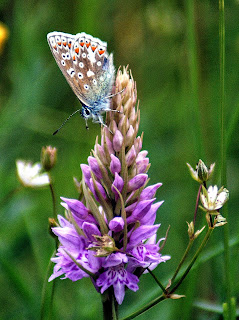 Four
species of tit are to be found around Sliabh Mannan. Three of them come to my garden. Sometimes
on a grey day they can be hard to distinguish by sight. The
easiest to confuse are the great tit (parus major) ( top left) and
the coal tit (parus ater) (second from top).
Four
species of tit are to be found around Sliabh Mannan. Three of them come to my garden. Sometimes
on a grey day they can be hard to distinguish by sight. The
easiest to confuse are the great tit (parus major) ( top left) and
the coal tit (parus ater) (second from top).
The naked eye is drawn straight to
the white cheeks and black cap that the two species have in common
and although the great tit is larger this is not much help if you
don't see the two together.
A good distinguishing feature is the
bright yellow underparts with a black stripe down the middle of the
belly of the great tit, whilst the coal tit has what you might call
dull buff / pink underparts. The black "cheek strap" is
usually incomplete in the coal tit, which also has a white stripe
down the nape of its neck, (not seen in this picture.)
The
blue tit (parus caerulis) (left) is much more easily distinguished by its
colour though this can sometimes be a little dowdy in winter. One
pair obligingly occupied a nest box outside my kitchen window and
very kindly cleaned house after raising a family and moving out.
It is interesting that these three species seem quite at ease with each other, as well as with other individuals of their own species. I have observed none of the sort of territorial feuding that can often be seen, for example, amongst robins.
The fourth species to be found in woodland around the moor is the long tailed tit (aegithalos caudatus). There is no mistaking these, but they skitter and are reluctant to pose for the photographer, chattering away to each other and performing acrobatic manoeuvres in the shrubs and trees.
The whole extended family is numerous locally and often to be heard even when not seen.











